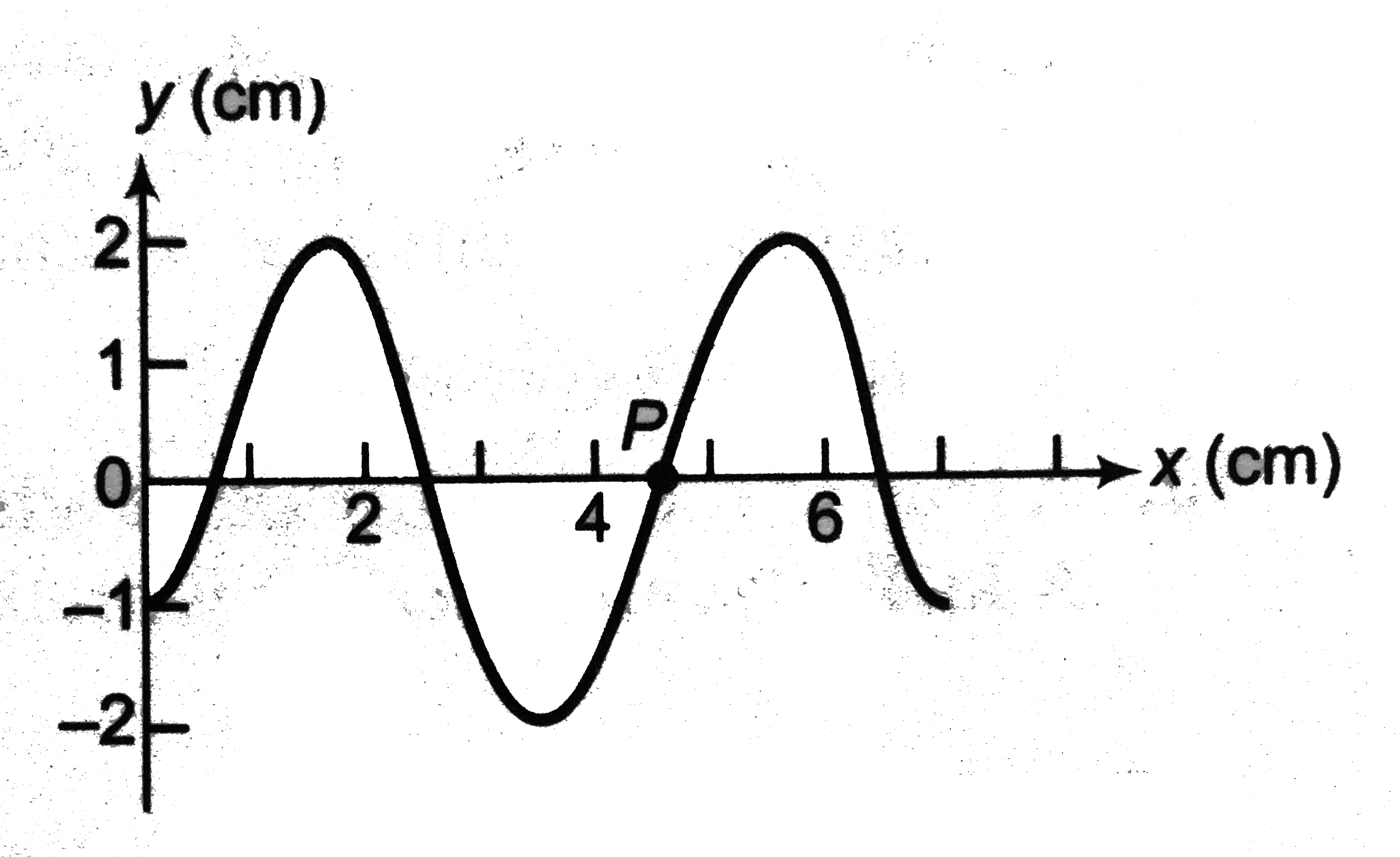Consider a sinusoidal travelling wave shown in figure. The wave velocity is +40cm/s.
Find
(a) the frequency
(b) the phase difference between points 2.5cm apart
(c) the velocity of a particle at P at the instant shown. 
The correct Answer is:A, B, C, D
(a) λ2=2cm
rArr λ=4cm
f=vλ=404=10Hz
(b) Δϕ=2πλΔx=(2π4)(2.5)=5π4
( c ) ωt=θ
or (2π/t)=θ
∴t=θ2πf=π/3(2π)(10)
=160s
(d) At P, particle is at mean position. So,
v=maximum velocity
=ωA
=2πfA
=(2π)(10)(2)
=(40π)cm/s
=125.7cm/s=1.26m/s
Further, vP=−(v)(∂y∂x) ...(i)
Sign of v1, the wave velocity is given positive.
Sign of ∂y∂x, slope of y−x graph is also positive.
Hence, from Eq. (i) particle velocity is negative.
∴vP=−1.26m/s
Topper's Solved these Questions
- WAVE MOTIONBOOK - DC PANDEY ENGLISHCHAPTER - WAVE MOTIONEXERCISE - Level 2 Single Correct
5 Videos
- WAVE MOTIONBOOK - DC PANDEY ENGLISHCHAPTER - WAVE MOTIONEXERCISE - Level 2 More Than One Correct
6 Videos
- WAVE MOTIONBOOK - DC PANDEY ENGLISHCHAPTER - WAVE MOTIONEXERCISE - Level 1 Objective
6 Videos
- VECTORSBOOK - DC PANDEY ENGLISHCHAPTER - VECTORSEXERCISE - Medical enrances gallery
9 Videos
- WORK, ENERGY & POWERBOOK - DC PANDEY ENGLISHCHAPTER - WORK, ENERGY & POWEREXERCISE - Level 2 Comprehension Based
2 Videos
Similar Questions
Small amplitude progressive wave in a stretched string has a speed of 100cm/s.and frequency 100 Hz. The phase difference between two points 2.75 cm apart on the string in radians, is
View SolutionA progressive wave moves with a velocity of 36m/ s in a medium with a frequency of 200Hz. The phase difference between two particles seperated by a distance of 1 cm is
View SolutionThe potential difference (VA−VB) between points A and B in a part of an electrical circuit shown in the figure at the instant shown is
_PHY_E05_273_Q01.png)
View SolutionTwo points on a travelling wave having frequency 500 Hz and velocity 300ms−1 are 60∘ out of phase, then the minimum distance between the two point is
View SolutionIn the figure shown, find
(a) the time when the particle strikes the ground at P.
(b) the horizontal distance QP
(c) velocity of the particle at P.

View SolutionThe graph below shows that instantaneous displacements due to progressive iongitudinal wave travelling with a velocity 50ms−1 along the direction ABCD. [Fig 14.4.8 (b)].
(a) What is the frequency of the wave ?
(b) What is the phase difference between the vibrations at C and D?
(c ) At which of the points A,B,C,D is the instantaneous particle velocity maximum forward?
(d) At which of the points, A,B,C,D is there a rarefraction?
View SolutionA wave pulse on a string on a string has the dimension shown in figure. The wave speed is v=1 cm /s . If point O is a free end. The shape of wave at time t = 3s si

View SolutionThe phase difference between two points separated by 0.8 m in a wave of frequency 120 Hz is 0.5π . The wave velocity is
View SolutionS1: The particles speed can never be equal to the wave speed in sine wave if the amplitude is less then wavelength divided by 2π.
S2: In transverse wave of amplitude A, the maximum particle velocity is four times its wave velocity. Then, the wave length of the wave is πA
S3: the phase difference between two points separated by 1m in a wave of frequency 120 Hz is 90∘. the velocity of the wave is 480 m/s
View SolutionA sound wave of frequency 80Hz is travelling with speed 320m/s.
(a) Find the change in phase at a given position in 400ms
(b) Find the phase difference between two positions seperated by 20cm at a particular instant.
View Solution
